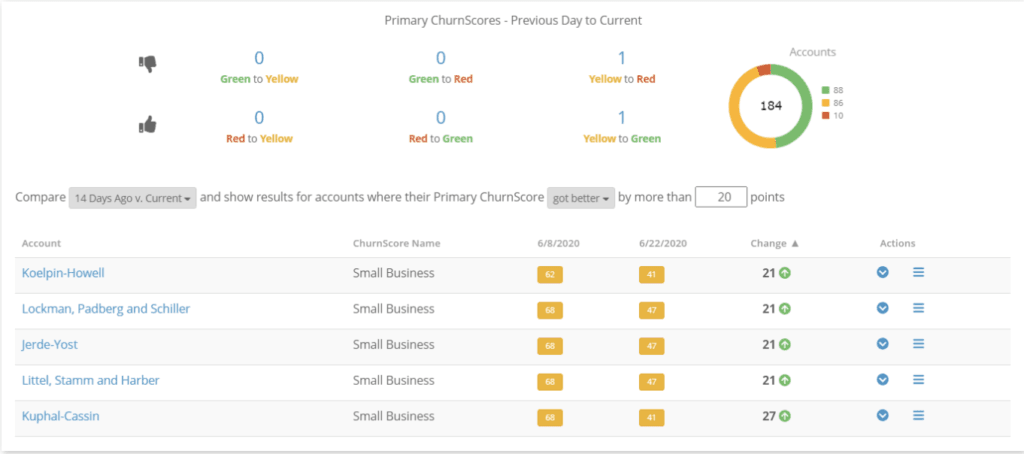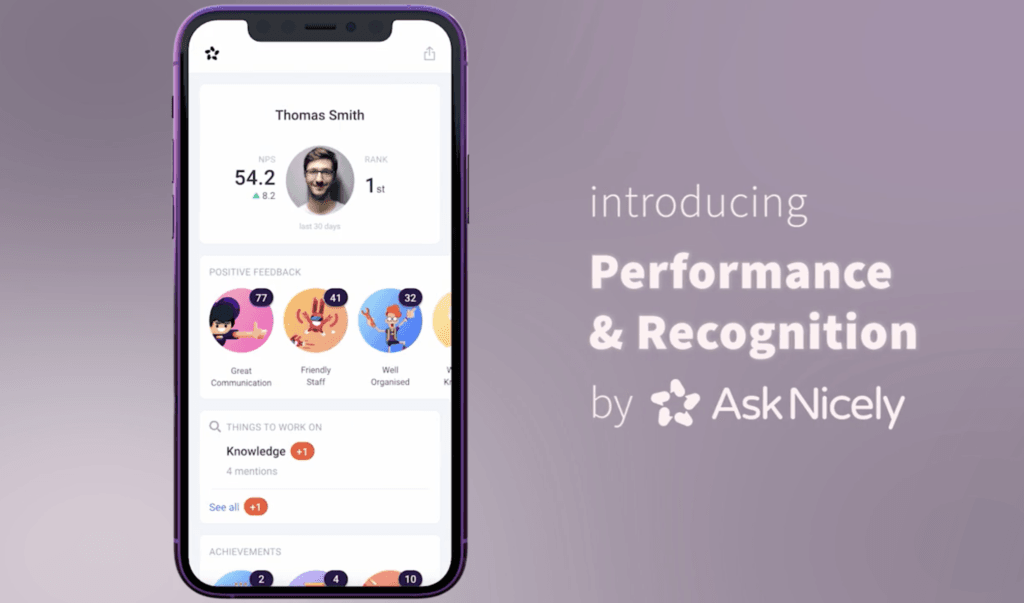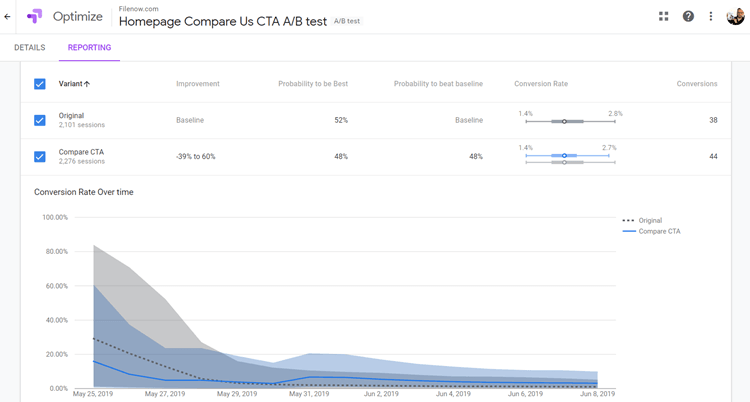Updated: January 24, 2024- 8 min read
Editor’s note: the following was written by a guest blogger. If you would like to contribute to the blog, please review the Product Blog contribution guidelines and contact blog@productschool.com
At UserGuiding we have prepared this article with our Product Team to talk about the importance of a frictionless experience. To do that, we are going to define the main performance metrics that refer to a “Good UX”, and make some tool suggestions to improve them.
User Experience design is a term that you are most likely familiar with. It is about designing a product in a way that meets customer needs better than the alternatives. Delivering a simple and delightful journey to end users is the main goal of the product development process. A well-designed journey is one where the end user is able to understand and experience the benefits provided by the product or the service, without any difficulties.

A bad UX may cause failures. If the end users are not able to experience the proposed value successfully, they are most likely to leave and look for alternatives.
A successful product that is not gone through a well-studied UX design process is unimaginable. So, you can consider UX as one of the vital components for building the ultimate product. However, product teams (especially start-ups, and small teams) often suffer from a lack of adequate UX skills. Therefore, it becomes a crucial gap that product people need to fill.
If you put the features and benefits of the product on one side and the needs of the users on the other, UX design is the process of connecting these two as friction as possible. Product Managers should always be collaborating with different departments to improve this process. A PM primarily lives in a world of product ideas mainly documented with verbal statements. In some cases, product managers have to turn these words and ideas into a product. This is where UX Design comes out as a huge gap that translates the words and sees what the eventual experience of the product is.
This process requires a product manager to become the bridge between the development team and the actual users of the product.
Most Important Performance Metrics that Are Being Tracked by Successful PMs
Now that we’ve explained the importance of UX design let’s go over some important performance metrics that all successful product managers should keep an eye on.

Churn Rate
What is Churn Rate?
The churn rate is the number of customers or subscribers who cut ties with your service or company, divided by the total number of customers during a given time period. It’s a vital performance metric for SaaS products because it is inversely correlated with revenue.
Why is it important?
A high churn rate is a very bad sign for a product manager. It’s a leaky bucket for your company and should be worked on immediately.
Which products can help product managers improve churn rate?
There are lots of great tools out there that help you analyze the behavior of your users and alert you when there is something wrong. But what other product can so publicly define that it helps you reduce churn to zero if not ChurnZero?

With ChurnZero, you can see the customer health scores that anticipate the success or failure of each customer and segmentation. This helps you see if your customers are actually going through the magical “Aha!” moment of your product and become a “power user”.
Seeing the pain points of your customers will help you improve your UX and reduce your churn rate.
User Retention Rate
What is User Retention Rate?
User retention can be defined as the ability of a product to retain its users over a specific period of time while keeping them engaged with the product.
The retention rate varies with the industry of the product. Social media platforms may look into the daily user retention rate, while a SaaS product may look into the weekly rate.
Why is it important?
Most product teams only focus on lead generation. But a low retention rate causes a high churn rate, which is a leaky bucket. An online customer loyalty research by Bain&Co published that a 5% increase in customer retention produces more than a 25% increase in profit. That’s crazy!
Which products can help product managers improve retention rate?
A successful new user onboarding process helps product teams to improve the week 1 retention rate. The clearer the way to your product’s “Aha!” moment, the better. And interactive user onboarding products are great for the job.
With UserGuiding, product teams can create & maintain interactive product walkthroughs without any coding. With strong features such as onboarding checklists, detailed analytics, segmentation, and customization, it’s possible to create a result-oriented onboarding flow only in a few hours.
PS: If you are still using those looong user manuals for your product, I have bad news for you. It’s not 1995! And please, we are talking about user experience here.
Product Adoption
What is Product Adoption?
Product adoption is a process by which customers hear about a new product or a service and become recurring users of it. It is a crucial aspect of customer health and plays a primary role in customer success.
Why is it important?
Increasing product adoption encourages your customers to detect new items and elements within your product. And also, your customers can discover new features of an existing product. Plus, it enables them to become long-term users. For the most successful companies, higher adoption is indispensable for higher revenue.
Which products can help product managers improve product adoption?
Product teams increase the value of the product with each new feature & update to the product. It’s basically giving the users what they want.
The most important barrier here is that, with every new update in your product, your users have to learn something new. User onboarding helps users adopt new changes in products, but the real solution here is user analytics.

Mixpanel is an amazing analytics tool to measure and understand user actions in your product. They have a 7-step strategy to measure and improve adoption and UX:
Pick a goal that defines your product,
Create a hypothesis,
Select KPIs,
Set up events,
Analyze results,
Create a new hypothesis,
Iterate from step number 2.
Net Promoter Score (NPS)
What is NPS?
NPS is a loyalty measurement taken by asking your users how likely they are to recommend your product to other people on a scale of zero to ten.
Why is it important?
NPS surveys are the most practical ways to ask for feedback from users about their experience with your product. It is also considered to be one of the predictor metrics of a company’s growth.
Which products can help product managers improve NPS?
There are lots of tools to gather user feedback and NPS, and some of them are actually free. But to make NPS be really helpful for your company, the tool should give advanced analytics, detailed reports, charts, lifetime data archive, and segmentation.

AskNicely has all of them. Plus, lots of integrations, email, text, and in-app options to gather user feedback with stylish surveys.
Asking your users about their experience with your product is… a great way to start improving your UX!
Conversion Rate
What is Conversion Rate?
The conversion rate is the number of specific conversions divided by the total number of visitors. It is one of the most important performance metrics for product marketing. And very relevant to UX.
The conversion rate is the number of conversions divided by the total number of visitors. For example, if an e-commerce site receives 200 visitors in a month and has 50 sales, the conversion rate would be 50 divided by 200, or 25%. A conversion can refer to any desired action that you want the user to take.
Why is it important?
Let’s say that you spend $2,000 per month on Facebook to bring 4,000 visitors to your website. The cost per visitor here is $0.5.
But only 400 of them register for your free trial. Oh, you have a 10% conversion rate from visitor to free trial. That’s not bad! Also, your cost per free trial user is $5.
You create a hypothesis and decide to do an A/B test with your hero text on your landing page. Now, that $2,000 brings you 4,000 visitors again, but you have 800 of them registering for your free trial. Your conversion rate is 20% now. That’s really good! And suddenly, with 1 change on your landing page, you’ve decreased your cost per free trial user to $2.5 – half of what it was before.
Now, you agree with me that it is really important, right?
Which products can help product managers improve conversion rate?
Actually, there are lots of ways to improve your conversion rate on your website. One of the easiest and hassle-free solutions is Google Optimize.

It’s super easy to use, powerful, integrates well with Analytics (of course), and free. You can create A/B tests, multivariate tests, deliver better personalized experiences to your visitors. All that, without any coding and for free. Thanks, Google!
Meet the Author

Mert Aktaş is VP of Growth at UserGuiding. Currently, he’s the bridge between the customers and the product team at UserGuiding. They are building the best onboarding software in the galaxy.
Updated: January 24, 2024




